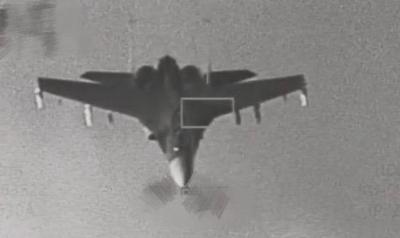Minister of National Defense Kao Hua-chu (高華柱) yesterday gave only vague answers when asked to comment on reports that the military’s top research institute had developed a 1,200km medium-range surface-to-surface missile capable of hitting central China.
“The military normally does not comment on programs that are still in development,” Kao said of a report in the Chinese-language Next Magazine, adding that some of the article’s content was not factual.
However, Kao added that “many things” were still in development and that there was much room for improvement, adding that the ministry would explain the matter to the public “when the time becomes opportune.”
The article said that following a number of breakthroughs in engine technology and miniaturization, the Chung Shan Institute of Science and Technology (CSIST), the nation’s top military research institute, had developed — and tested twice this year — a new surface-to-surface missile with a range of 1,200km that is capable of hitting Shanghai, about 700km from Taiwan, and parts of the South China Sea.
If the budgets are made available, mass production of between 50 and 60 missiles could begin in 2014 over a period of five years, with first deployments as early as 2015, the report said.
The article added that the military did not rule out developing a 2,000km-range missile, which would bring Beijing within reach.
Taiwan’s current land attack cruise missile (LACM) force employs the Hsiung Feng IIE (HF-2E), a 650km land and ship-based variant of the HF-2 anti-ship cruise missile. Mass production of the missile, which has not been seen publicly, is reported to have begun in 2010, along with that of the HF-3 supersonic anti-ship missile.
The ultra-secretive CSIST has long struggled with range and warhead miniaturization issues and has faced pressure from the US, which fears an arms race in the Taiwan Strait, not to seek further advances in LACMs.
Taiwan’s surface-to-surface missile capability is regarded as a purely counterforce means to attack enemy missile bases as well as command and control centers for China’s Second Artillery Corps. Although the HF-2E can target missile bases in Fujian Province, where the majority of China’s Dong Feng-11 (DF-11) short-range ballistic missiles are deployed, it comes short of the missile bases located deeper in Chinese territory, where medium-range DF-15 and DF-16s are located.
Although this view is not universal, a number of military experts say that a missile deterrent force would be a more cost-effective way for Taiwan to defend itself against China than the acquisition of expensive platforms such as new F-16C/Ds or large destroyers.

Trips for more than 100,000 international and domestic air travelers could be disrupted as China launches a military exercise around Taiwan today, Taiwan’s Civil Aviation Administration (CAA) said yesterday. The exercise could affect nearly 900 flights scheduled to enter the Taipei Flight Information Region (FIR) during the exercise window, it added. A notice issued by the Chinese Civil Aviation Administration showed there would be seven temporary zones around the Taiwan Strait which would be used for live-fire exercises, lasting from 8am to 6pm today. All aircraft are prohibited from entering during exercise, it says. Taipei FIR has 14 international air routes and

Taiwan lacks effective and cost-efficient armaments to intercept rockets, making the planned “T-Dome” interception system necessary, two experts said on Tuesday. The concerns were raised after China’s military fired two waves of rockets during live-fire drills around Taiwan on Tuesday, part of two-day exercises code-named “Justice Mission 2025.” The first wave involved 17 rockets launched at 9am from Pingtan in China’s Fujian Province, according to Lieutenant General Hsieh Jih-sheng (謝日升) of the Office of the Deputy Chief of the General Staff for Intelligence at the Ministry of National Defense. Those rockets landed 70 nautical miles (129.6km) northeast of Keelung without flying over Taiwan,

City buses in Taipei and New Taipei City, as well as the Taipei MRT, would on Saturday begin accepting QR code payments from five electronic payment providers, the Taipei Department of Transportation said yesterday. The new option would allow passengers to use the “transportation QR code” feature from EasyWallet, iPass Money, iCash Pay, Jkopay or PXPay Plus. Passengers should open their preferred electronic payment app, select the “transportation code” — not the regular payment code — unlock it, and scan the code at ticket readers or gates, General Planning Division Director-General Liu Kuo-chu (劉國著) said. People should move through the

The Ministry of National Defense (MND) today released images of the military tracking China’s People's Liberation Army (PLA) movements during the latest round of Chinese drills around Taiwan. The PLA began "Justice Mission 2025" drills today, carrying out live-fire drills, simulated strikes on land and maritime targets, and exercises to blockade the nation's main ports. The exercises are to continue tomorrow, with the PLA announcing sea and air space restrictions for five zones around Taiwan for 10 hours starting from 8:30am. The ministry today released images showing a Chinese J-16 fighter jet tracked by a F-16V Block 20 jet and the